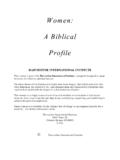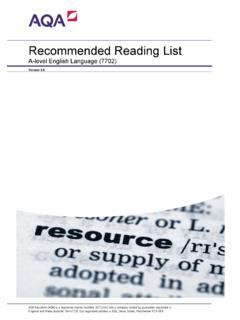Transcription of Guide - Toastmaster of the day - toastmasters …
1 Quest toastmasters Club 5651 Guide for Toastmaster of the Day updated December 2005 Author: Gis le M nard ATM-B, CL Being Toastmaster of the Day is one of the most valuable experiences in our Club. It s a very challenging role, however, the first time you try it, you will simply love it! The main duty of the Toastmaster is to act as a genial host and conduct the entire meeting, including introducing the participants. If the Toastmaster does not perform his/her duties well, an entire meeting can end in failure. For obvious reasons this task is not usually assigned to a member until he or she is quite familiar with the Club and its procedures. Program participants should be introduced in a way that engages the audience and motivates them to listen. The Toastmaster creates an atmosphere of interest, expectation and receptivity.
2 Prior to the meeting (during the week) : 1. At the Quest toastmasters Club, the Toastmaster selects the theme of the day. Choose a theme that will let the people s imagination roam (example : Time) (any thing can be used as a theme; it is interesting and often fascinating to learn about a certain fruit, a vitamin, trips, a city, a pencil, a watch, etc.) 2. Prepare a question related to your theme (example : on the theme TIME - What quality time do you offer yourself ?) that will help you to introduce your team: Timer, Grammarian, Ah Counter (if present), Table Topics Master, Speakers and General Evaluator. During the week, you may either call each member of your team OR email your question, using their short answer to introduce them. 3. Call each speaker to remind them they are delivering a speech.
3 Interview them to find out something interesting which you can use when introducing them (job, family, hobbies, education, why this topic for ); Also ask for : Manual and project number Title of the speech Time allotted Speech objectives Personal purposes to be achieved The answer to your question to introduce her/him + some information on their toastmasters performance (their level ex: CTM-5 or ATM-B 5 (Advanced toastmasters Bronze) 4. Remind each speaker to get in touch with their respective evaluator to share their personal objectives besides the speech objectives. This is greatly appreciated because the speaker often forgets to get in touch with her or his speech evaluator prior to meeting. 5. Prepare a short introduction for each member of your team besides speakers (see 3) : Timer, Grammarian, Topicmaster, General Evaluator.)
4 Do not hesitate to 2find out interesting points to introduce them properly, like their past toastmasters achievements (inquire after any experienced member OR just ask the participant. A proper introduction is important to the success of each member s performance. 6. Email your theme and your question to the President because he will ask a question when inviting members to introduce themselves and it has to be a different one than yours. 7. Ask him how long of a business period he will require. 8. Email your theme to the Sergeant at Arms for his introduction of the President. 9. Email your theme to the member who will propose a Toast. 10. Email your theme to the member who will make the Joke. 11. Email your theme to the member who will give us a Good News.)
5 12. Email your theme and your question to the Topicmaster (part of your team). 13. Email your theme and your question to the Timer (part of your team). 14. Email your theme and your question to the Grammarian (part of your team). 15. Email your theme and your question to each speaker (delivering a speech) (part of your team). 16. Email your theme and your question to the General Evaluator (part of your team). 17. For your information, all the evaluators (topics and speeches) are under the responsibility of the General Evaluator. 18. It would be an appreciated gesture if you would email your theme to all Quest members so they know what to expect and sometimes prepare accordingly and bring innovation to the Club. You could use the Vice President Education s email addresses used for sending the weekly schedule.
6 19. Invite the Table Topics Master to bring a copy of his or her questions to the meeting to hand it over to the Table Topics Evaluator; it is a nice and courteous gesture, but most of all, extremely helpful in order to ease his or her task. 20. Prepare the agenda (template at the end of this Guide ) also available through the undersigned by email); Print the agenda in approximately 30 copies; (we are 29 members up to this date plus some guests and some members do not have e-mail) 21. Prepare as well your program (template at the end of this Guide ); make a short introduction related to your topic (30 to 40 seconds) since you will talk a lot 3during the meeting and not to take too much of the other members time); the explanation of the 3 parts of this meeting is mandatory.
7 22. It is suggested that you use your imagination; example : your theme could be baseball, then you could use all the terms related to baseball; so throughout the meeting, people would be at a baseball field; (you could invite members to wear a cap) you could bring accessories like a baseball bat, a ball, ). 23. It is the Toastmaster s duty to handle the time throughout a meeting. Since the Toastmaster is the time handler, always check the time on your agenda and at any time, invite the performer to end her or his session like the Topicmaster, the General Evaluator - when the time allotted is over. To summarize your preparation: Choose a theme; Email your theme to all performers including the President (+ your question) and the Sergeant at Arms; Email your theme to all Quest members; Prepare your agenda and program accordingly; (see templates below) (ask me to email them to you) o Check how many speeches are on the menu; (this will set the pace for the whole meeting o Ask the President, how long a business period will be required; o Pause; (depending on how long speeches are, you may set the pause to 3, 4 or 5 min) At the meeting : 1.
8 Arrive early at the meeting. 2. Place a copy of your agenda in front of each table setting where the Sergeant at Arms has already placed the evaluation sheets and the breakfast menu. 3. Check if there are any last-minute changes; (if so, inform the Sergeant at Arms to mention them prior to his introduction of the President. 4. Meet with the Timer for any last-minute instructions. 5. 7:00 am, it s time for the Sergeant at Arms to introduce the President. 6. The President will lead the introductions for the members, the Toast and the Good News, after which the President will introduce you. The success of the meeting is now in your hands! Preside the meeting with sincerity, energy and decisiveness, taking your audience on a pleasant journey and make them feel that all is going well.)
9 47. With a short introduction, the Toastmaster introduces the Timer and invite the Timer to explain his or her role; then you lead the applause and thank the Timer; Always lead the applause before and after the topics session, each prepared speaker and the general evaluator. 8. With a short introduction, the Toastmaster introduces the Grammarian and invite the Grammarian to explain his or her role; then you lead the applause and thank the Grammarian; 9. With a short but a little more elaborate introduction, the Toastmaster introduces the Topicmaster. The Toastmaster gives the name of the Table Topics Evaluator. The Toastmaster will inform the Topicmaster when to end the topics session (time handling is extremely important and is under the Toastmaster s responsibility); Remain standing near the lectern after your introduction UNTIL the speaker has acknowledged you, shaken hands and assumed control of the meeting, then be seated.
10 10. The Toastmaster will call for the Timer s report on the topics and will invite the members to vote for the Best Topic (vote for the impromptu speaker who has reached the required objectives). 11. The Toastmaster will declare a pause of .. minutes; 12. The Toastmaster will introduce the President for the business period; (no elaborate introduction, just say something like : To conduct the business period, here is our President, Mister or Mrs. ? ?) Don t forget, after each performer to lead the applause. 13. The Toastmaster will introduce each speaker (see template for more accurate details); mention the name of the speech evaluator. 14. After each speech, declare a moment to fill out the evaluation sheet for this speaker (if you mention 1 minute, then you will require that the Timer sets the chrono at 1 min and advice you by showing the red cardboard when time is over); (1 min can be used if there is plenty of time, but usually we lack of time and ask for a moment only to fill out the evaluation sheet).




